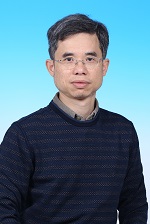Topological Photonics Phenomena That Are Not Characterized By Integer Invariants
Hosted By: Photonic Metamaterials Technical Group
23 February 2022 8:00 - 9:00
Eastern Time (US & Canada) (UTC -05:00)Recently, topological phases in photonic and phononic systems have captured the attention of scientists and engineers. These topological phases are usually classified by global topological invariants are usually integers, such as Chern numbers or winding numbers. In this webinar hosted by the Photonic Metamaterials Technical Group, Che Ting Chan from The Hong Kong University of Science & Technology will use examples to illustrate that we can have topological phenomena that are not characterized by integers.
In the first example, we will see how non-Abelian topological charges (that behave like matrices) can be realized in some electromagnetic metamaterial systems; and the physical consequences that will arise, including the formation of boundary modes and the constraints on degeneracy features in the bulk.
In the second example, we will see that some simple photonic/phononic crystals which do not have bulk integer topological invariants behave like a "valley-Hall" topological crystal when certain boundary conditions are applied.
Subject Matter Level: Intermediate - Assumes basic knowledge of the topic
What You Will Learn:
- Topological metamaterials and photonic/phononic crystals
- Robust transport
Who Should Attend:
- Graduate students, postdocs, faculty, and industry members interested in topological photonics
About the Presenter: Che Ting Chan, The Hong Kong University of Science & Technology
 C.T. Chan received his PhD degree from the University of California at Berkeley in 1985. He is currently serving as the Associate Vice-President for Research & Development at HKUST. He is also concurrently the Daniel C K Yu Professor of Science, Chair Professor of Physics and the Director of Research Office of HKUST. He has been elected a Fellow of the American Physical Society and Hong Kong Physical Society.
C.T. Chan received his PhD degree from the University of California at Berkeley in 1985. He is currently serving as the Associate Vice-President for Research & Development at HKUST. He is also concurrently the Daniel C K Yu Professor of Science, Chair Professor of Physics and the Director of Research Office of HKUST. He has been elected a Fellow of the American Physical Society and Hong Kong Physical Society.
